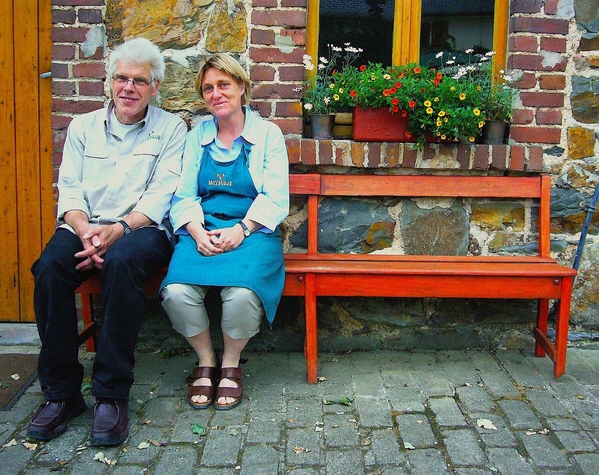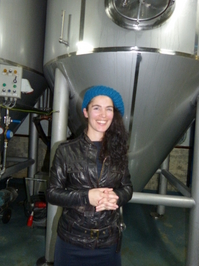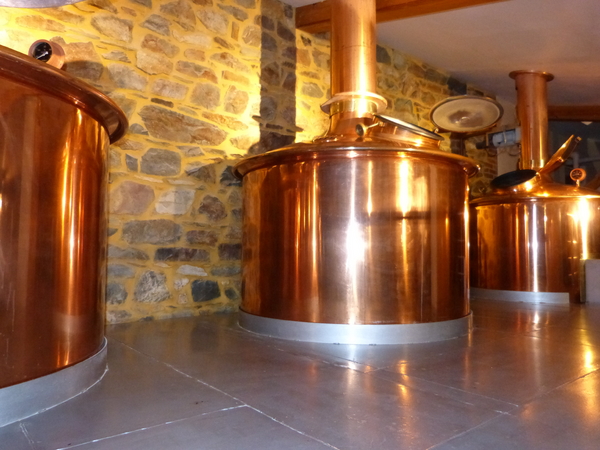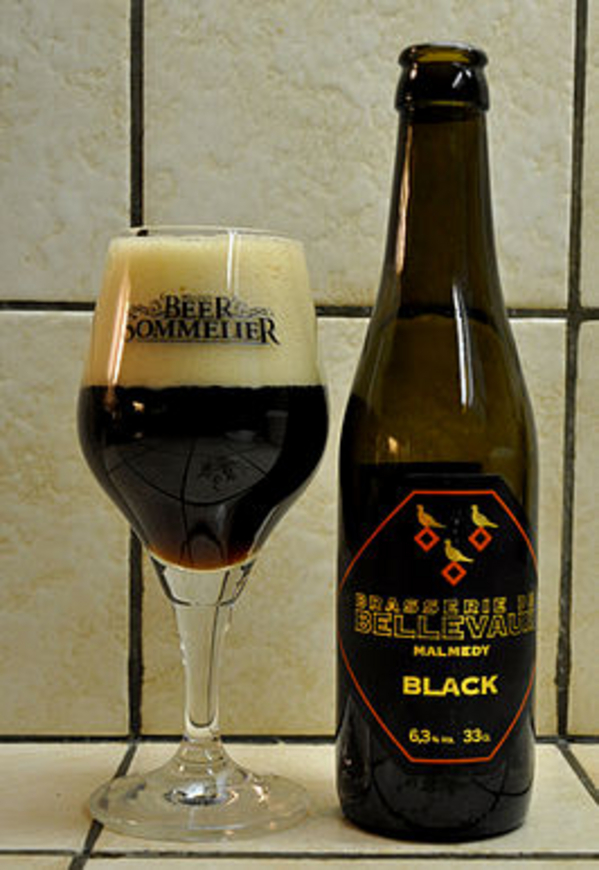Abbey and farm brewers keep the faith in Belgium's eastern region around Liege
Added: Friday, November 8th 2013

In Belgium, you’re never far from a brewery. From Liège, the ancient cultural and historic heart of Wallonia, short journeys take you to two modern breweries, one based in an ancient abbey, the second in a wooded valley in the Ardennes.
Val-Dieu means the Valley of God and monks established a church there in the village of Aubel in 1216. The valley is close to both Maastricht in the Netherlands and Aachen in Germany, a region fought over for centuries during the wars that ravaged this part of Europe. The church was destroyed four times, the last during the French Revolution.
But with indomitable determination, the monks rebuilt the church every time and it became a fully-fledged Cistercian abbey, complete with its own brewery. In the monastic tradition, the monks made strong pale and brown ales that sustained them, especially during Lent, and which were sold in small quantities to help with the upkeep of their communities.
By 2001, there were just four elderly monks left. The Cistercian Order found it difficult to recruit new members for the strict and demanding life and the abbey closed. It’s now run by lay people and it can be toured to admire the magnificent Renaissance and Gothic architecture, including the church and rooms with great vaulted ceilings.
The abbey has a charming, cobble-floored restaurant, Casse-Croûte, where visitors can sample both the local Herve cheese and beer from the restored brewery on site. Accommodation is also available: www.abbaye-du-val-dieu.be.
The brewery is based in old farm buildings and it was opened in 1997 by partners Benoît Humblet and Alain Pinckaers. Brewing ceased at the abbey during the French Revolution and in the 20th century Val-Dieu beers were produced under contract by commercial brewers. Now brewing takes place on smart, modern, stainless steel kit back at the abbey, where the main focus of interest – given the history of the place – is a woman brewer or brewster, Virginie Harzé.
Virginie produces 8,000 hectolitres a year, using soft local well water, French malt and Czech Saaz and German Hallertauer hops. The yeast culture was supplied by the brewing faculty at Leuven University, with a second culture used for bottle-conditioning. One-third of production goes into keg, with the majority of sales in the Liège area. But bottled versions can be found as far afield as Canada, China, Russia and the United States.
Virginie
Harze,
woman
brewster
in a former
abbey

The beer range includes a wheat beer, Blanche (6%), a Blonde of the same strength with a tart lemon note, an 8% Brune with a rich aroma and palate of bitter chocolate and raisins, and an excellent 9% Triple packed with rich, plum-like fruit, nutty malt and a dry finish.
A second room in the stables houses tall conical fermenters that reach up into the high, vaulted ceiling. As a result of demand for the beers, fermenting capacity will be increased. www.val-dieu.com

The Bellevaux brewery’s name means “beautiful view”, which neatly sums up its location in the rolling, wooded hills of the Ardennes. It’s based on a former farm a few miles from the town of Malmedy, on the eastern edge of Belgium. When the country was stitched together in the 1830s, this region was not included and remained part of Prussia. Bismark banned the French language, which is why a substantial number of people are still German speakers, though others quietly used the Walloon dialect during the Prussian period. The region was finally ceded to Belgium by the Treaty of Versailles after World War One. Malmedy suffered dreadfully during World War Two, virtually destroyed by the German forces who then massacred a contingent of American servicemen attempting to liberate the town. The town’s museum, which traces the history of the area, should not be missed.
The brewery dates from 2007 and was founded by Carla Berghuis and her husband Wil Schuwer (pictured at the top). They are Dutch and Wil owned a successful chain of pharmacies in the Netherlands, which he sold to fulfil his ambition of having his own brewery. The couple have been joined by their son, Tom: one beer, TPA, stands for Tom’s Pale Ale.

The brewing equipment was custom-built in Japan and is based on the European method of mash mixer, lauter tun, hop kettle and whirlpool. 800 to 900 hectos are produced annually, with 98% of the beer sold locally. The brewery has a capacity of 10,000 hectos and additional fermenters are on order to keep pace with demand.
The main hops used in pellet form are Strisselspalt from Alsace and English Fuggles, though Tom, the junior brewer, uses the Aramis variety supplied by the Co-operative du Houblon d’Alsace for his Pale Ale. Grain comes from France and Belgium. Wil says the local water, sourced from the surrounding hills, is “as soft as Pilsen’s” and it’s “Burtonised” – with the addition of salts – for the TPA.
The beers, on draught and bottle-conditioned, burst with rich malt and hop character. The biggest-selling beer is the 7% Blonde, with earthy and spicy hops competing with juicy malt. A Blanche wheat beer (4.8%) is produced for the summer period. Brune, at 6.8%, is a fine interpretation of the Belgian style, with nutty and chocolate notes balanced by spicy hops. Black, 6.3%, is Wil’s attempt to recreate Theakston’s Old Peculier, a favourite beer of his. He admits the end result – toasted and roasted malt notes, with chocolate and raisins and earthy hops – is more of a Porter in style. Finally, TPA (6%) packs a big punch of floral and herbal hops, balancing the rich juicy malt.
An old stable block has been turned into a rustic restaurant, where local dishes, including warming soup and local cheeses, are offered. Not surprisingly, brewery and restaurant attract 6,000 visitors a year.
Carla and Wil have invited me back. As I arrived in the dark, I’m keen to return to sample the beers again and to enjoy the Beautiful View.
*The visits to the breweries were made possible by the organisers of the Brussels Beer Challenge, to whom many thanks.







